Ryu Ga Gotoku brings a dose of reality to Yakuza with the release of Like a Dragon: Ishin! Based on the real-life story of Sakamoto Ryoma, played by Kiryu Kazuma, the story is based on the late Edo period during its Bakumastu phase. Ryoma is pitted in a conflict between honoring his adoptive father, who was recently assassinated, or standing by his brother in a quest that will shake the very future of Japan.
Like a Dragon: Ishin! is a 2023 remake of 2014’s original, developed by Ryu Ga Gotoku Studios and published by SEGA. It is currently available on PC, Playstation, and Xbox consoles.
Editor’s Note: A PlayStation review copy of Like a Dragon: Ishin! was provided by SEGA in support of this review. Near-complete spoilers for Ishin! and minor spoilers for the Yakuza franchise may be present within this review.
Ever since its boom in the West with releases such as Yakuza 0 & Yakuza Kiwami 1 and 2, the Yakuza franchise has been going through a rebuilding and introductory phase. Having nearly exhausted the re-releases of past titles, which had moderate success before the previous releases, the Ryu Ga Gotoku team has been experimenting with further sequels and spinoffs related to the series, such as Judgement and the remake of Ishin! While it’s safe to say that the franchise’s future will likely stay around for years to come, that isn’t to say its past has nothing left to offer, and Ishin! is such a title that proves it.
THE GOOD: Ishin! Takes place during the final years of the Edo period in its Bakumastu phase. Sakamoto Ryoma has returned from Edo to his home of Tosa after receiving swordsmanship training. He meets with his adoptive father, Yoshida Toyo, who wants him and his adoptive brother Takechi to join the Tosa Loyalist Party, a group looking to change the future of Japan by bringing equality and eliminating classism. One night the three meet at Koichi Castle, where they discuss plans, but the castle is attacked, and Toyo is killed by a masked assassin wielding a sword with a unique combat style. Following a battle with the killer, who escapes, Ryoma & Takechi run from authorities. Ryoma protects a near-dead Takechi and flees from the police by committing dappan. One year later, Ryoma, now under the alias of Saito Hajime, lives in Teradaya Inn, posing as a lazy drunkard. In reality, he’s searching for those who use the same swordsman style as Toyo’s assassin, the Tennen Rishin.
Ryoma meets someone under the alias of Niibori Matsusuki, who informs him of an information broker known as the Bathkeeper of Sai. The info broker tells Ryoma that the Tennen Rishin is used mainly by the leaders of the Shinsengumi. Deducing that one of the leaders is likely the assassin of Toyo, Ryoma decides to join the group undercover to find his adoptive father’s killer. Sometime later, Ryoma reunites with his brother Takechi who tells him he has formed the Tosa Loyalist Party. Takechi had offered him a spot in the group, but against his wishes, Ryoma tells Takechi of his intentions to join their current enemy and find their father’s killer. Following his triumphant entry into the Shinsengumi, Ryoma quickly finds distaste with the group as they’re willing to kill both present members and those who wish to leave.
As Ryoma gains the trust of the other Shinsengumi, though, with some suspicions, the war between the group and the Tosa ramps up. He is suddenly named the Third Division Captain of the Shinsengumi due to his impressive talents as a samurai. Ryoma meets up with Izo, who kills two Shinsengumi leaders before fighting Ryoma. Upon his defeat, Izo is captured and interrogated about his knowledge of Takechi. Sometime later, Ryoma aligns himself with Toyo’s former retainer Nakaoka Shintarō. An internal war within Japan begins to brew with Takechi as one of the heads in cooping it up. Several Shinsengumi leaders are killed, including Sixth Division Captain Inoue Genzaburō, who was revealed to be Toyo’s killer. The latter is linked to the Shinsengumi and its chief, Kondo Isami, who knew Ryoma’s alias was fake. Inoue, First Division Captain Okita Sōji and Second Division Captain Nagakura Shinpachi were Inoue’s proteges. Ryoma learns that an imposter was using his name, which was Takechi. After feeling as though his entire world is crumbling around him, he goes out drinking with rival faction leaders Katsura and Saigo, the latter of which befriend each other, ending a long historied rivalry between their factions.
Kondo enlists Ryoma to send a letter to the Shogun, explaining the terms to enact the Great Restoration, which is booming. He returns to Kyo, which was set ablaze by Itō Kashitarō and defected Shinsengumi captains Takeda Kanryūsai and Tōdō Heisuke (who was later killed after being revealed as a Shinsengumi spy), creating their group called the Goryo Eji. Izo kills Kondo, but before his death, he tells Ryoma he’s thankful for meeting him and making him believe in his country again. Ryoma faces Izo again, defeating him with the latter begging him to stop Takechi with his dying breath. The remaining Shinsengumi encounter the Goryo Eji, the British allies, and Ryoma faces Takechi. The brothers forgive each other but are attacked by Yodo, who reveals he plans to sell Japan to the British to gain power within the new system. Ryoma and Takechi, along with the Shinsengumi, kill Yodo and allow Japan’s future to be placed into the hands of the people. However, two years later, Takechi stole Yodo’s identity and restored imperial rule to Japan. Meanwhile, Ryoma relinquishes his original name living out the rest of his days as Saito in the countryside of Japan.
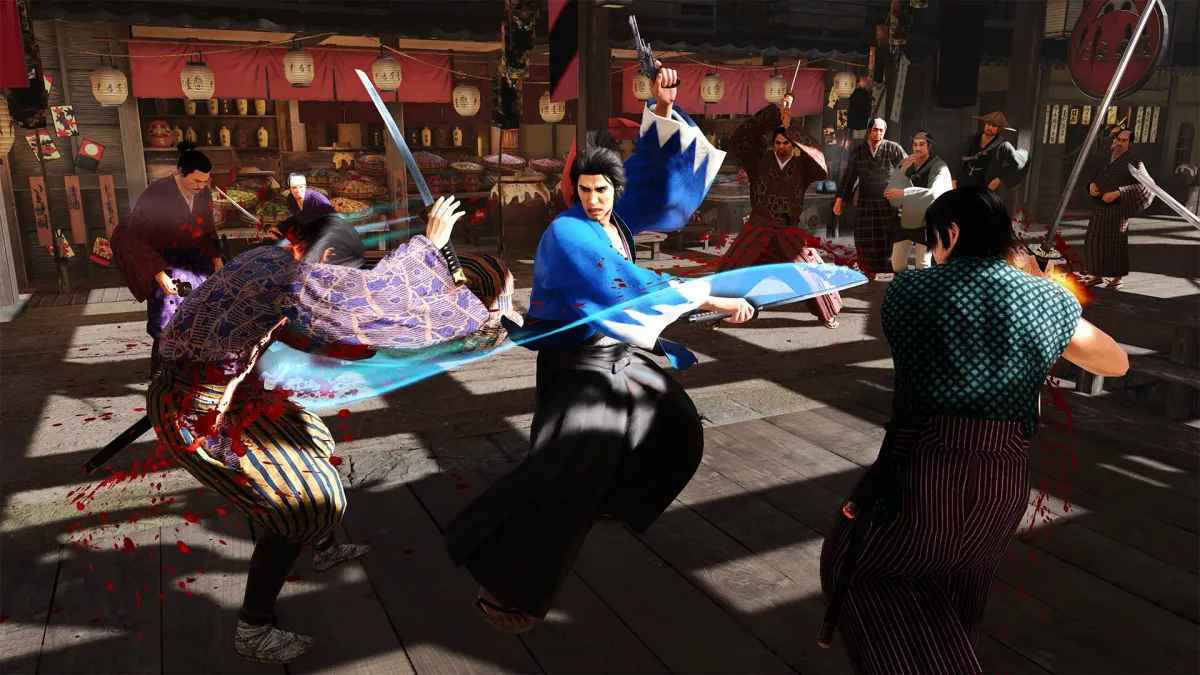
Ishin! Features four styles for battle, including brawler, wild dancer, gunslinger, and swordsman. Each possesses unique abilities and advantages.
Suppose you’ve played any more recent Like a Dragon/Yakuza titles; since Kiwami, much of the gameplay is familiar. Four distinct styles of play to toy around with until you eventually settle on a favorite: Gunslinger (gunplay), Swordsman (gunplay), Brawler (hand-to-hand combat and power-based attacks), and Sword Dancer (a mix of gun and swordplay with some athleticism for dodging and such) with my personal favorite being Sword Dancer. Each style has unique moves that can be unlocked through level progression or dojos in the game world. As you gain exp, you gain skill orbs to increase the power and repertoire of each style. By leveling up, you can also improve your health, attack, etc.
Exploration is present, but it’s lighter than in previous titles. This is mainly due to the period established within the game world but also the limitations of the hardware for the game’s original release. Also, there was only so much you could do back in Edo-era Japan for fun. Like other titles, “Ishin!” takes an open-world approach with its world map. Something neat that you can do is learn about different happenings within the world by talking to the locals. It’s one of the more prominent ways to find in-game secrets like the dojos, as mentioned above. It’s a surprisingly immersive mechanic, and I hope they explore the possibility of bringing it back in future titles.
Regarding difficulty, if you’re familiar with Like a Dragon, you’ll know there are moments when it spikes weirdly in certain parts of the game. I never really felt that here in “Ishin!”; in fact, there were times when it felt too easy. However, it leaves for a much more casual experience throughout at least the first playthrough.
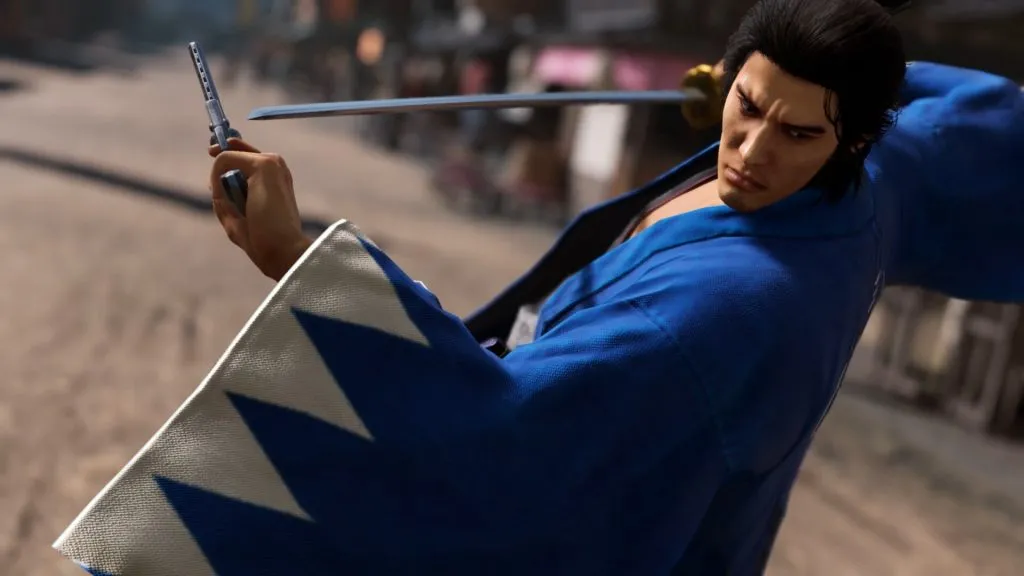
Ishin! Makes for a great introductory piece of media for anyone interested in ancient Japanese history.
THE BAD: There are times when Like a Dragon Ishin shows its age at times, most specifically in the exploration options of the game. While this has been a bit of a hallmark for the franchise in recent years, you must remember that this is a remake of a late PlayStation 3/early Playstation 4 game depending on your region. So naturally, limitations are to be expected, but that older flare the Yakuza franchise had before the Kiwami reboot gave it a significant upgrade can also show itself in the gameplay and presentation.
Like a Dragon: Ishin! is another home run for the Like a Dragon series.
OVERALL THOUGHTS: Like a Dragon: Ishin! is a good remake of an already solid spinoff that probably lends itself better to the time and enjoyment of Japanese history buffs who happen to be ‘Dragon’ fans. It’s not necessarily as simplistic as being “just another Dragon game,” but it’ll be polarizing for both new and long-time fans of the franchise due to how different it strays about from the path. Nevertheless, it’s worth at least a playthrough for its unique touch on real-world events alone.



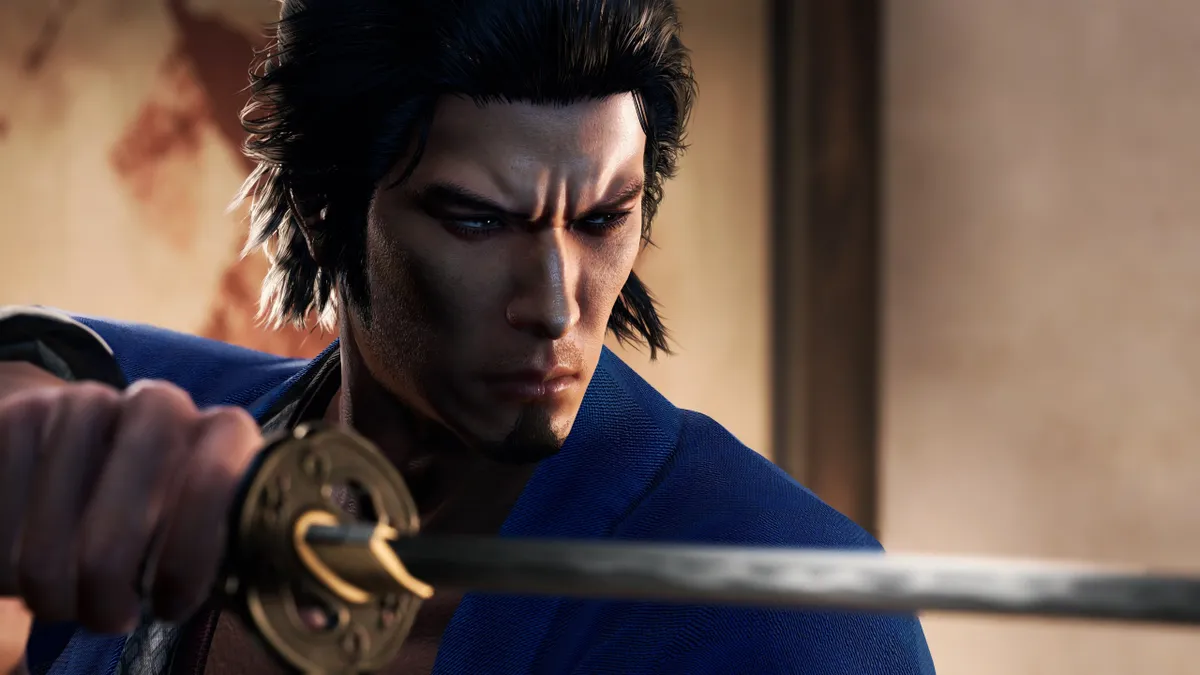
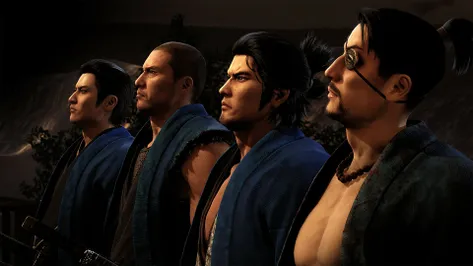
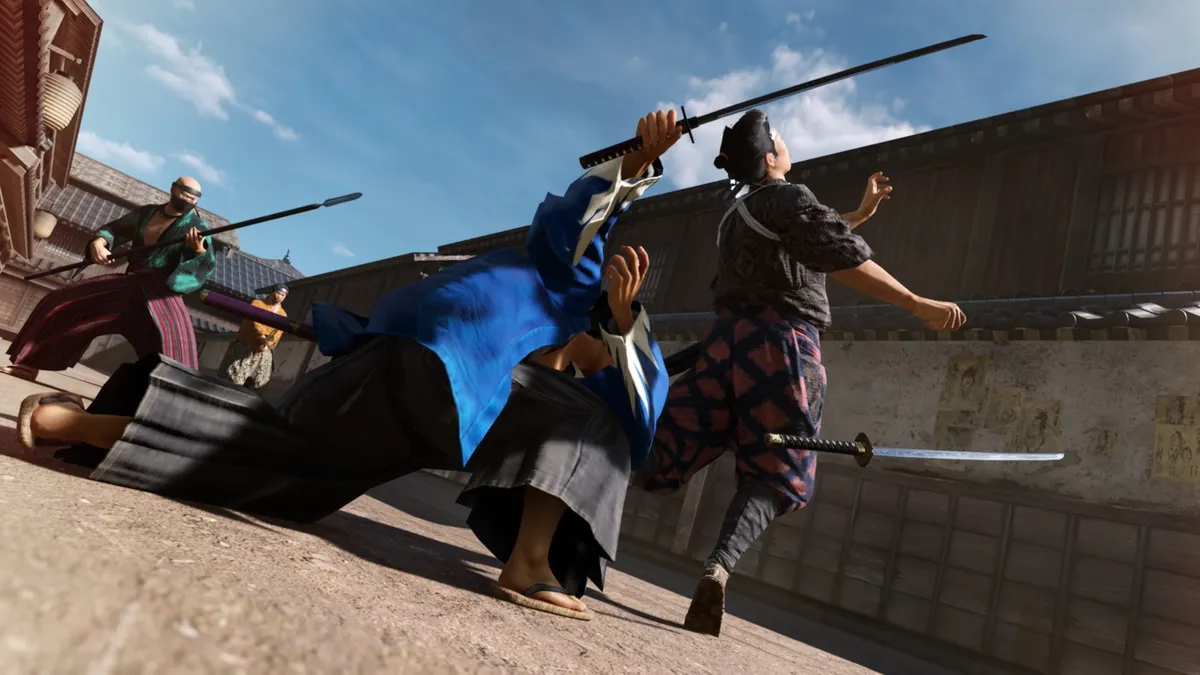












You must be logged in to post a comment.